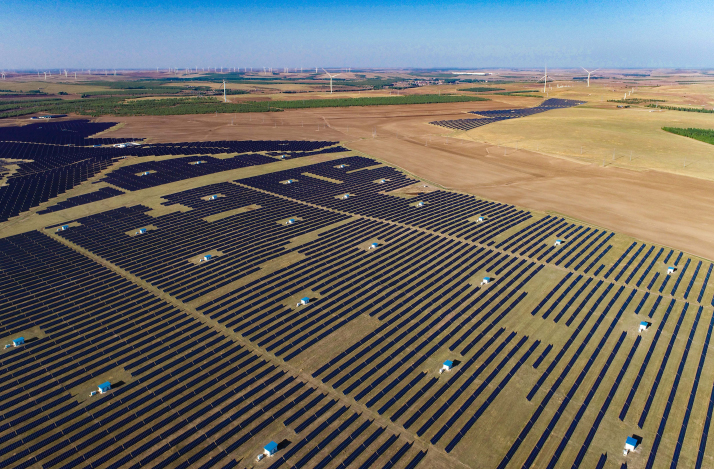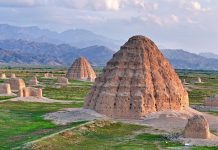In its latest report, the World Meteorological Organization confirmed what the world had been fearing. There is a 98-percent possibility that at least one of the next five years will be the hottest on record.
Moreover, it is more than likely that the average temperature will exceed pre-industrial levels by 1.5 degrees Celsius. This is important since higher temperatures for a sustained period may trigger irreversible and multiplicative processes that further disrupt the harmony between humanity and nature.
The science underlying climate change is formidably complex. The short synthesis of the latest Assessment Report of the Intergovernmental Panel on Climate Change, published earlier this year, ran to 83 pages and was written by a team of some 99 scientists and editors.
The messages, though, are clear. Atmospheric, oceanic and land temperatures are all rising due to human activity with net emissions—the principal cause—continuing to increase, albeit more slowly than before (1.3 percent per year compared to 2.1 percent per year during 2000-09). Even with reduced emissions achieved through mitigation, temperatures will continue rising, requiring society to adapt. Without adaptation, heat-related deaths will increase, cities will be inundated, islands will disappear, crop yields will fall and fish stocks will decline. More destructive climatic events are inevitable, and food and water insecurity will increase.
Although the science is increasingly sophisticated, the challenges were already known when the UN Framework Convention on Climate Change was agreed on in Rio de Janeiro in 1992. However, it then took 23 years to negotiate and reach the Paris Agreement, in which countries coalesced around a non-binding goal of limiting global warming to below 2 degrees Celsius above pre-industrial levels and preferably below 1.5 degrees Celsius. The symbolism of the 2015 Paris Agreement—the world working together—is, in hindsight, more important than its achievements. Even if every country delivers on the pledges agreed, temperatures will still rise by 2.7 degrees Celsius by 2100, almost double the maximum desirable level.
Punishing the innocent
If the science is complex, so too are the politics. History has bequeathed the world the cruelest of scenarios. Communities and countries worst affected by climate change are those that have contributed least to the problem. They are also typically the poorest and least powerful.
Emissions vary markedly between regions and households. The 10 percent of households emitting the most greenhouse gases release three times more than the half of households that emit the least. Less severely affected by climate change, their affluent governments can afford the relatively minor cost of adaptation. Approximately 3.6 billion people are highly vulnerable to the negative effects of climate change. They are concentrated in low- and lower middle-income countries.
To move beyond the symbolism of the Paris Agreement, rich governments must act with altruism and not solely out of self-interest.
In 2009, high-income countries agreed to contribute $100 billion per year by 2020 to assist developing countries in adapting to climate change. They have yet to do so and, if they ever do contribute, the true value will have been much reduced by inflation.
Amid rejoicing in 2022, the UN Climate Change Conference in Sharm el-Sheikh, Egypt, decided to introduce a fund for loss and damage caused by climate change—an idea first proposed in 1991.
Yet agreement and implementation are different. The first meeting of the committee charged with designing the fund took place in Luxor, another city in Egypt, in March. Regrettably, according to the Center for International Environmental Law, developed countries sought “to keep the conversations centered around the broader funding arrangements that already exists” rather than focusing on the fund itself. The fear is that, as with financing for mitigation and adaptation, they will insist on assistance in the form of loans, not grants. This is not altruism. Loans add to the debt burden of recipient countries while increasing the incomes of the developed world.
Eyck Freymann, author of The Warming War, a series of reports on the breakdown in climate diplomacy and its implications for the planet and the China-U.S. relationship, argued that the U.S. is seeing an emerging consensus that “climate talks are a waste of time.” In support, he cited H.R. McMaster, Donald Trump’s national security advisor from March 2017 to April 2018: “In a democracy, people aren’t going to vote to transfer capital to developing countries because we feel guilty that we already had our fair share of carbon emissions.” Altruism ends at national borders.
Freymann further stated that, beyond a lack of altruism, the U.S. has “weaponized climate.”
Politics and penalties
The historic unfairness—innocent countries being punished for the profitable errors of others—was recognized at the original Rio Conference in 1992. Therefore, the formula of “common but differentiated responsibilities” was devised, dividing countries into Annex II countries (with resources to assist others) and non-Annex II countries (needing to prioritize development and poverty eradication).
The formula was operationalized in the 1997 Kyoto Protocol, an agreement under the UN Framework Convention on Climate Change. However, by that time, the U.S. Senate had unanimously passed the Byrd-Hagel Resolution preventing U.S. participation. President Bill Clinton had signed the protocol, but it was never ratified. With the U.S.—then the world’s largest emitter of greenhouse gases—a non-participant, 18 years were wasted before the Paris Agreement. This acknowledged the formula and embraced an agreement on joint emission reductions agreed on by Chinese President Xi Jinping and U.S. President Barack Obama in 2014.
Another four years were lost during Trump’s presidency during which the U.S. withdrew from the Paris Agreement in November 2020. Rejoining under President Joe Biden in 2021, the passive American resistance to aiding others has become active. The U.S. argued to defer decisions on a loss and damage fund while the orchestrated demands that China should be included in Annex II as a net financial contributor are, according to London-based think tank ODI, unwarranted. ODI analysis indicated that “both [China’s] per-capita income and its per-capita territorial cumulative emissions since the 1990s fall below any Annex II countries.”
But Freymann explained that the U.S. has turned a defensive war—”we will not pay to help climate victims”—into an offensive “warming war” “to drive down global climate emissions while also hobbling China’s economic rise.” Even China’s investment in decarbonization is presented as a threat to the U.S.: “They are doing this to outdo us, economically and diplomatically,” Democratic Senator Sheldon Whitehouse asserted in 2019.
Trump imposed tariffs on the import of solar panels from China. These “climate weapons” remain in place, ironically making solar energy less affordable in America, restricting demand and curtailing installations. Trump characteristically claimed that “the concept of global warming was created by and for the Chinese in order to make U.S. manufacturing non-competitive.”
Another “weapon,” according to Freymann, is the carbon border adjustment mechanism. This is a form of carbon pricing under which all carbon emitted during the production of imports is assessed and a related tariff imposed. Such a scheme is due to be implemented by the European Union in 2026 and serves as a model, although U.S. Democrats promoted the idea in 2009. A 2021 study by Tsinghua University in Beijing suggested China “would be the most heavily penalized” by the mechanism.
But China is not “weaponizing climate.” It is implementing an adaptation strategy designed to make life safer and better for the Chinese population. And, as confirmed by Oxford Institute for Energy Studies, unlike the U.S., it has been “unwavering in its support for the Paris Agreement.” –The Daily Mail-Beijing Review news exchange item





